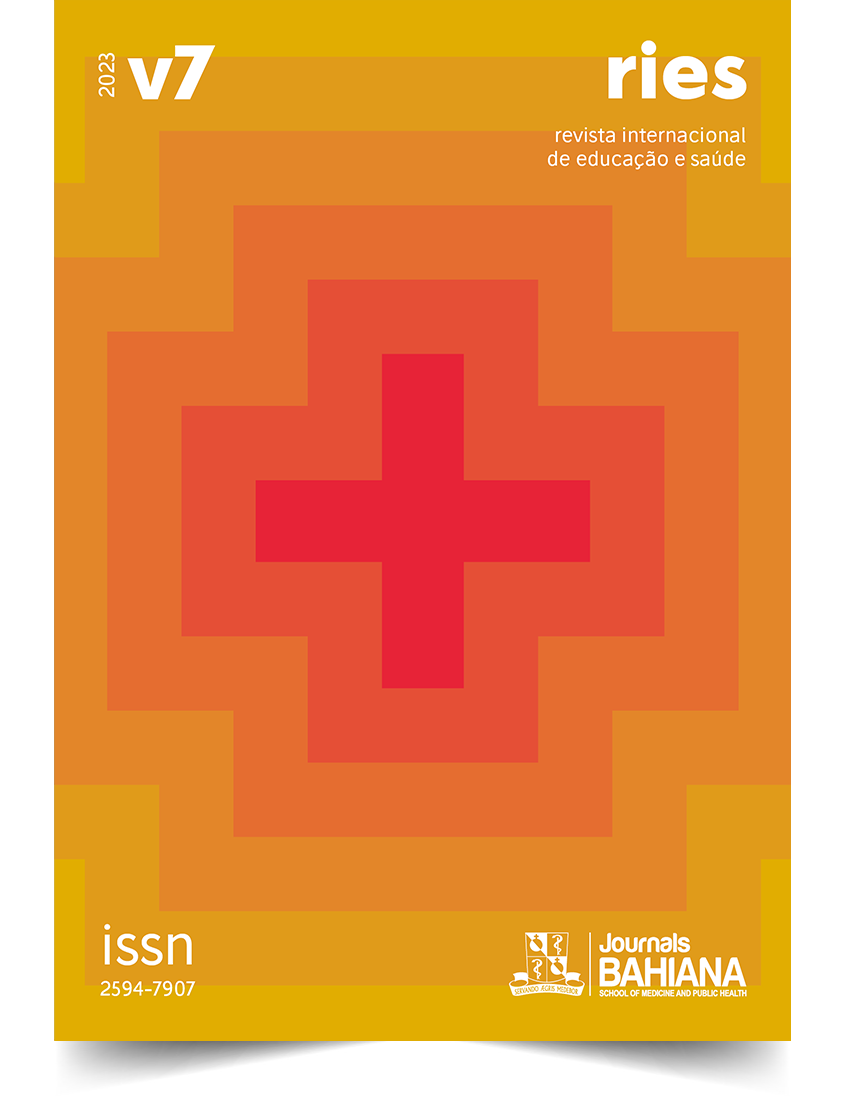O uso da metodologia de aprendizagem online colaborativa internacional em um curso médico - uma experiência de aprendizagem
DOI:
https://doi.org/10.17267/2594-7907ijeh.2023.e4974Palavras-chave:
Aprendizagem, Ensino, Educação médica, Pandemia de Covid-19, Educação, Distância, Pesquisa InterdisciplinarResumo
INTRODUÇÃO: A metodologia Collaborative Online International Learning (COIL) utiliza uma estratégia chamada "Mirror classroom", na qual dois ou mais professores e alunos de diferentes instituições de ensino podem partilhar um curso através da utilização de ferramentas tecnológicas. A ascensão da metodologia COIL aumentou devido à pandemia COVID-19, uma vez que as Instituições de Ensino Superior tiveram de desenvolver estratégias de apoio em formatos digitais para dar continuidade aos processos de mobilidade acadêmica. OBJETIVO: O objetivo deste artigo é apresentar a estratégia COIL como um método educativo híbrido que facilita a aprendizagem e a interação entre pares em uma turma da Faculdade de Medicina de uma Universidade na Colômbia. METODOLOGIA: Para a realização da experiência de colaboração, os estudantes com os seus grupos devem realizar uma pesquisa bibliográfica em bases de dados (PubMed, Science Direct e Embase), referente ao tema em discussão relacionado com genes, nutrição e obesidade. Com base na informação que compilaram, terão de criar um infográfico criativo na qual exporão a importância da expressão genética e a sua relação no processo de obesidade. Finalmente, fazer um vídeo expondo os resultados da investigação levada a cabo. CONCLUSÃO: A metodologia de trabalho colaborativo internacional é uma estratégia educacional que permite o desenvolvimento de competências transversais em estudantes e professores, o desenvolvimento de competências de trabalho em equipe, entre muitos outros. Este tipo de educação permite relações interpessoais com pessoas que estão em diferentes locais em todo o mundo.
Downloads
Referências
(1) Adell J, Castañeda L. Las pedagogías escolares emergentes. Cuad. Pedagog [Internet]. 2015;462. Available from: https://www.cuadernosdepedagogia.com/Content/DocumentoTDC.aspx?params=H4sIAAAAAAAEAO29B2AcSZYlJi9tynt_SvVK1-B0oQiAYBMk2JBAEOzBiM3mkuwdaUcjKasqgcplVmVdZhZAzO2dvPfee--999577733ujudTif33_8_XGZkAWz2zkrayZ4hgKrIHz9-fB8_IorZ7LOnb3bo2dt7uHN__xde5nVTVMvP9nZ27-_u3tvBB8X59dNq-uZ6lX92npVN_gvzSVW9Dd77_U37_weFpoGFUQAAAA==WKE
(2) Gaytán-Oyarzun JC, Cravioto-Torres R, Mendoza-Meza EY, Ortiz-Zarco E. Implementation of the COIL methodology, as a strategy to enhance the teaching-learning process and academic and student mobility in the virtual mode. Revista de Innovación y Buenas Prácticas Docentes. 2022;11(1):141-49. https://doi.org/10.21071/ripadoc.v11i1.14142
(3) Pérez MAC, Vinueza MAP, Yupangui HRA, Parra ADA. Information and Communication Technologies (TIC) as an interdisciplinary research with an intercultural approach to the process of student training. E-Ciencias de la Información. 2019;9(1):44-59. http://dx.doi.org/10.15517/eci.v1i1.33052
(4) Rubin J. Embedding Collaborative Online International Learning (COIL) at higher education institutions. Internationalisation of Higher Education [Internet]. 2017;2:27-44. Available from: https://studyabroad.uic.edu/wp-content/uploads/sites/256/2020/08/Rubin-Embedding-Collaborative-Online-International-Learning-at-Higher-Education-Institutions.pdf
(5) Castro AB, Dyba N, Cortez ED, Benito GG. Collaborative Online International Learning to Prepare Students for Multicultural Work Environments. Nurse Educ. 2019;44(4):E1-E5. https://doi.org/10.1097/nne.0000000000000609
(6) University of Washington Bothell. Resources for developing a COIL-enhanced course or program. COIL Resources [Internet]. Available from: https://www.uwb.edu/globalinitiatives/academic/coil-initiative/coil-resources
(7) Naicker A, Singh E, Genugten T. Collaborative Online International Learning (COIL): Preparedness and experiences of South African students. Innov Educ Teach Int. 2022;59(5):499-510. http://dx.doi.org/10.1080/14703297.2021.1895867
(8) Skagen D, McCollum B, Morsch L, Shokoples B. Developing communication confidence and professional identity in chemistry through international online collaborative learning. Chem Educ Res Pract. 2018;19(2):567-82. https://doi.org/10.1039/C7RP00220C
(9) Western Sydney University. Collaborative Online International Learning [Internet]. Australia: Western Sydney University; 2020. Available from: https://www.westernsydney.edu.au/__data/assets/pdf_file/0009/1735686/Guidelines_for_Developing_COIL_1.0.pdf
Downloads
Publicado
Edição
Seção
Licença
Copyright (c) 2023 Laura Duque-Echeverri, Yuban Sebastián Cuartas-Agudelo, Miguel Eduardo Saavedra-Valencia, Santiago Castañeda-Palacio, Lina María Martínez-Sánchez

Este trabalho está licenciado sob uma licença Creative Commons Attribution 4.0 International License.
Esta obra está licenciada com uma Licença Creative Commons Atribuição 4.0 Internacional.



